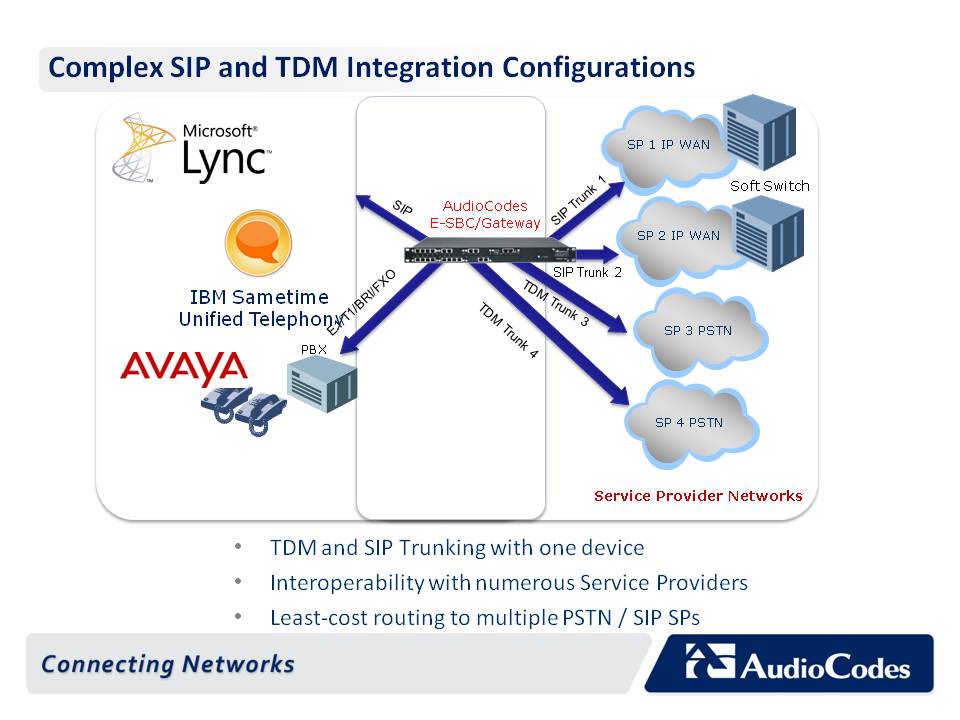An E-SBC plays a number of important roles when integrating SIP Trunking service providers to SIP-based Unified Communications systems - including Microsoft Lync, Avaya Aura, IBM SUT and others:
1. Interoperability – using the Back-to-Back User Agent (B2BUA) features of an E-SBC, they can solve many of the interoperability issues that exists between systems today. In this role, each SIP session is terminated and re-established on the other side, allowing format difference between the two systems to be corrected. Beyond issues at the signaling plane, E-SBCs can resolve media differences with transcoding of voice, fax and DTMF tones. Resolving interoperability issues significantly expands the range of choices when selecting SIP Trunking services – this gives greater negotiating power and flexibility.

2. Dealing with Upgrades - An often overlooked issue with interoperability is system upgrades. Sure as death and taxes – The UC vendors will be making new versions of their products and it’s highly unlikely the upgrades will be coordinated with all the SIP Trunking service providers. With the B2BUA, adjusts can be made on the UC application side while leaving the SIP Trunking service provider side untouched (or visa-versa). If you directly connect the two systems directly and there is an interoperability issue, you’ll have to wait for one of the two vendors to correct the issue. Unfortunately, most UC vendor are overwhelmed with new product feature development – leaving most of the interoperability work to the field to correct.
3. Security – using an E-SBC between two SIP-based communications systems also offers additional security. Even is situations where MPLS or VPN technologies are used, E-SBCs can act to protect one part of the system even if there is a breach elsewhere. A common attack is the Registration Flood, causing the UC software to do exhaustive databases looks ups just to find out that a registration attempt is bogus. Send enough bad registration attempts to any SIP Registrar fast enough and the invader can slow or even crash important communications systems. E-SBCs watch for patterns in registrations and can shut them out before they ever get to the UC application.

-thumb-autox90-10361.jpg)











Leave a comment